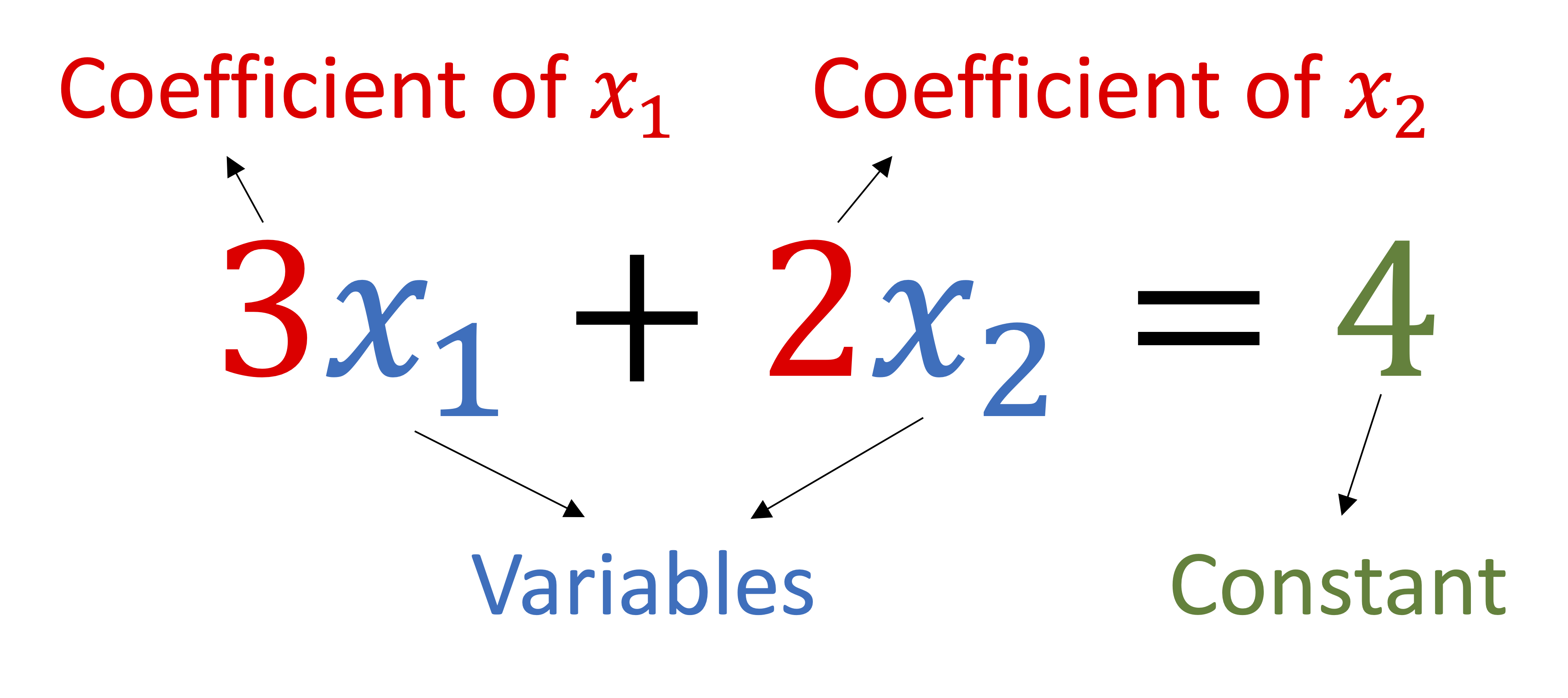Definition 2.1.1. Linear equations in \(\R^2\).
A linear equation in \(2\) variables \(x_1, x_2 \) is an equation that can be written in the form
\begin{equation*}
a_1\,x_1 + a_2\,x_2 = b
\end{equation*}
where the coefficients \(a_1\) and \(a_2 \) and the independent variable \(b\) are all constants.





